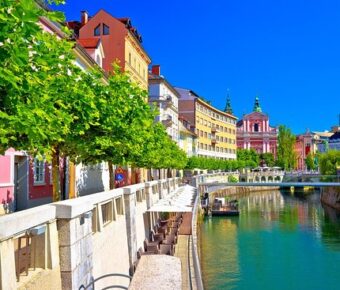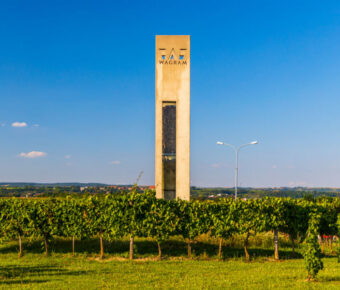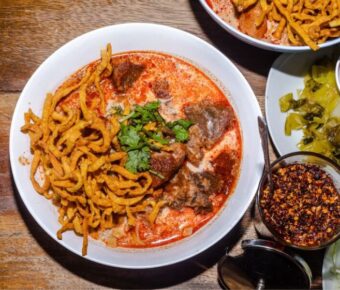
Why Traveling to Japan in the Off-Season is the Best Decision You’ll Make
Planning a trip to Japan? Consider visiting during the off-season for a unique and rewarding experience. While spring and fall draw crowds for cherry blossoms and autumn foliage, Japan’s less popular travel months offer their own charms.
You can enjoy Japan’s attractions with fewer tourists and often at lower prices during the off-season. Summer brings vibrant festivals and beautiful beaches, especially in Okinawa. Winter transforms popular destinations into snowy wonderlands, perfect for hot springs and winter sports. Even the rainy season in June and July has its appeal, with lush greenery and blooming hydrangeas.
Exploring Kansai in winter reveals a different side of iconic cities like Kyoto and Osaka. You’ll find peaceful temples dusted with snow and cozy restaurants serving hearty seasonal dishes. In Hyogo Prefecture, don’t miss the chance to soak in outdoor hot springs while surrounded by a wintry landscape. Remember to pack layers, as temperatures can vary significantly between regions and times of day during off-peak seasons.
Contents
Beat The Crowds In Kyoto

Kyoto’s popularity can lead to crowded attractions, but you can still enjoy this beautiful city without the masses. The key is timing and choosing less-visited spots.
Rise early to beat the crowds. Visit popular sites like Kiyomizu-dera Temple or Fushimi Inari Shrine right when they open. You’ll have a more peaceful experience and better photo opportunities.
Alternatively, explore in the evening. Some temples and gardens are open late, offering a magical atmosphere as the sun sets.
Consider these lesser-known gems:
- Otagi Nenbutsu-ji Temple
- Kurama-dera Temple
- Okochi Sanso Villa
These spots offer tranquil beauty without the throngs of tourists.
Avoid weekends and Japanese holidays if possible. Plan your visit during the off-season, typically late autumn or early spring.
Try exploring residential areas like Nishijin or Arashiyama’s bamboo grove early in the morning. You’ll get a taste of local life and stunning scenery without the crowds.
For popular markets like Nishiki, go during lunchtime when many tourists are at restaurants. You’ll have more space to browse and interact with vendors.
Remember, sometimes the best experiences in Kyoto come from wandering off the beaten path. Don’t be afraid to explore quiet side streets and hidden temples.
Sapporo In Spring: A Fresh Perspective

Spring breathes new life into Sapporo, transforming the city into a vibrant wonderland. As the snow melts away, cherry blossoms and tulips paint the landscape in soft pinks and vivid hues.
You’ll find Odori Park bursting with color, making it the perfect spot for a picnic. Pro tip: arrive early to snag a prime viewing spot under the blooming trees.
The city’s culinary scene flourishes in spring. Edible wild plants like fuki (bog rhubarb) and bamboo shoots appear on menus, offering unique seasonal flavors. Don’t miss the chance to try fresh seafood, especially the prized Hokkaido crab.
For a cultural experience, head to Susukino. This lively district comes alive in spring with its bustling restaurants and bars. Be sure to visit Ramen Alley for a steaming bowl of Sapporo‘s famous noodles.
Nature lovers, make your way to the Maruyama Zoo. Spring is an ideal time to visit as the animals become more active after their winter slumber.
Planning a day trip? The Nijukken Road of Cherry Blossoms offers a stunning 7-kilometer stretch of pink petals. Time your visit for late April to early May for peak bloom.
Remember to pack layers – Sapporo’s spring weather can be unpredictable. A light jacket and umbrella are essential for comfortable exploration.
The Magic Of Okinawa In Autumn

Autumn transforms Okinawa into a subtropical paradise. As October rolls in, the intense summer heat subsides, leaving you with perfect beach weather.
Daytime temperatures hover around a pleasant 26°C (79°F), ideal for outdoor adventures. Pack light layers for cooler evenings when temps can dip to 23°C (73°F).
The beaches remain inviting well into fall. Many resorts keep their swimming areas open, so you can still enjoy the turquoise waters without the summer crowds.
Autumn brings vibrant cultural events to Okinawa. Don’t miss the Naha Great Tug-of-War Festival in October, where you can join locals in pulling an enormous rope.
For a unique experience, head to Yambaru National Park in northern Okinawa. The autumn foliage here offers a colorful contrast to the region’s famous beaches.
Tip: Visit Cape Hedo for stunning ocean views and witness the autumn sunset paint the sky in brilliant hues.
Okinawan cuisine shines in fall with seasonal ingredients. Try goya chanpuru, a stir-fry dish featuring bitter melon, perfect for the cooler weather.
Remember to book accommodations in advance, as autumn remains popular with tourists seeking to avoid summer’s humidity and crowds.
Explore Hiroshima’s History Without The Lines

Visiting Hiroshima during the off-season can be a real treat. You’ll get to experience its rich history without battling crowds.
Start your journey at the Peace Memorial Park. In autumn and winter, you’ll find fewer tourists, allowing for quiet reflection. Pro tip: Visit early morning for the most serene experience.
Hiroshima Castle is a must-see. From December to February, it’s open from 9 am to 5 pm. Beat the chill by arriving just after opening – you’ll have the place practically to yourself!
Don’t miss Mitaki-dera Temple. This hidden gem is often overlooked by tourists. In fall, the surrounding maples put on a spectacular show of colors.
For a unique perspective, try the Hiroshima Sightseeing Loop Bus. It’s less crowded in off-peak months, giving you ample space to enjoy the city views.
Consider visiting on weekdays for even smaller crowds. Many local attractions offer discounted rates during quieter periods – just ask at the ticket counter!
Remember to pack layers. Hiroshima can get chilly in winter, but indoor spaces are well-heated. This way, you’ll stay comfortable as you explore the city’s fascinating past.
Lesser-Known Japanese Festivals

Japan’s festival calendar is packed with unique celebrations beyond the famous cherry blossom events. Why not plan your trip around some of these offbeat cultural experiences?
The Kanamara Matsuri in Kawasaki is a quirky spring festival celebrating fertility. You’ll see giant phallus-shaped floats paraded through the streets. Pro tip: Arrive early to snag a good viewing spot along the parade route.
For a chilling summer experience, check out the Obon Festival in Nagasaki. Locals release glowing lanterns into the sea to guide ancestral spirits. You can purchase your own lantern to participate in this hauntingly beautiful tradition.
Feeling brave? The Naked Man Festival (Hadaka Matsuri) in Okayama might be for you. Thousands of men in loincloths compete to grab lucky sticks. Remember to book accommodations well in advance, as this February event draws huge crowds.
In October, don’t miss the Wara Art Festival in Niigata Prefecture. Artists create massive sculptures using leftover rice straw. You can even try your hand at straw crafting in workshops held during the festival.
For a taste of rural Japan, visit the Owara Kaze no Bon in Toyama Prefecture. This September dance festival features locals in traditional costumes performing to haunting melodies. Bring a light jacket – evenings can get chilly.



